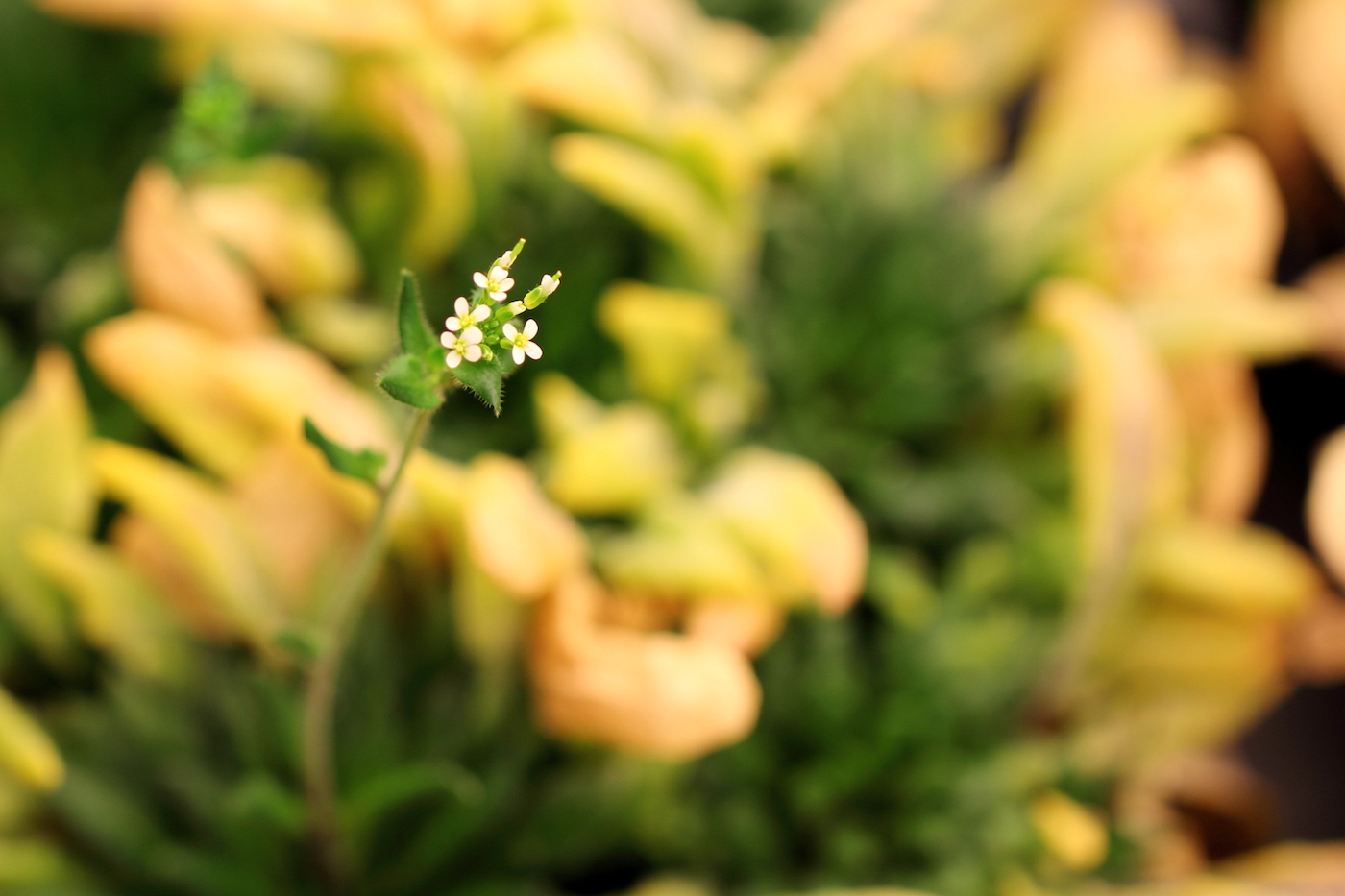| Kerdaffrec et al. 2017 | Germination rate of seeds after-ripened for 21, 63 and 105 days measured for 92 Swedish lines grown under two different temperature treatments, cold (15ºC) and warm (21ºC). | 6 | Mar/15/2018 |
| Satbhai et. al. Nature Communications 2017 | Low availability of Fe significantly limits crop yields in many parts of the world. However, it is largely unknown which genes and alleles adjust plant growth in Fe limited environments. Using natural variation of a geographically restricted panel of Arabidopsis thaliana accessions, we identify allelic variation at the FRO2 locus associated with root length under iron deficiency. We show that non-coding sequence variation at the FRO2 locus leads to variation of FRO2 transcript levels, as well as ferric chelate reductase activity, and is causal for a portion of the observed root length variation. These FRO2 allele dependent differences are coupled with altered seedling phenotypes grown on iron-limited soil. Overall, we show that these natural genetic variants of FRO2 tune its expression. These variants might be useful for improvement of agronomically relevant species under specific environmental conditions, such as in podzols or calcareous soils (Reference: doi:10.1038/ncomms15603). | 5 | Sep/05/2017 |
| DAAR | GWAS of three mass features of N-malonyl-D-allo-isoleucine in Arabidopsis thaliana inbred lines using ~250k SNPs in 416 accessions | 3 | Sep/05/2017 |
| Ion Concentration | Plants were grown in a controlled environment with 10 h light/
14 h dark (90 mmol m22s21 photosynthetically active light) and 19
to 22uC, as previously described [31]. Briefly, seeds were sown
onto moist soil (Promix; Premier Horticulture) in 10.506210 20 row
trays with various elements added to the soil at subtoxic
concentrations (As, Cd, Co, Li, Ni, Rb, and Se [31]) and the
tray placed at 4uC for 3 days to stratify the seeds and help
synchronize germination. Each tray contained 108 plants, six
plants each from 18 accessions, with three plants of each accession
planted in two different parts of the tray. Each tray contained four
common accessions (Col-0, Cvi-0, Fab-2 and Ts-1) used as
controls, and 14 test accessions. Trays were bottom-watered twice
per week with 0.25-strength Hoagland solution in which Fe was
replaced with 10 mM Fe-HBED[N,N9-di(2-hydroxybenzyl)ethyle-
nediamine-N,N9-diacetic acid monohydrochloride hydrate; Strem
Chemicals, Inc.). After 5 weeks plants were non-destructively
sampled by removing one or two leaves and the elemental
composition of the tissue analyzed by Inductively Couple Plasma
Mass Spectroscopy (ICP-MS). The plant material was rinsed with
18 MV water and placed into Pyrex digestion tubes. | 19 | Mar/21/2017 |
| 1001genomes flowering time phenotypes | Study of flowering time at 16°C (FT16) and flowering time at 10°C (FT10) that where phenotype for the 1001genomes project. | 2 | Aug/14/2016 |
| Atwell et. al, Nature 2010 | GWAS of 107 phenotypes in Arabidopsis thaliana inbred lines using ~250k SNPs in 199 accessions | 107 | Aug/13/2016 |
| Mejion | 201 different accessions of A. thaliana from different geographic origins. These accessions were part of the RegMap. Seeds were obtained by growing the parental generation of all lines used side by side in the same growth chambers under the same conditions. The seeds were surface sterilized in 2.8% hypochlorite for 4 min and washed three times in MonoQ sterile water. They were then stratified for 72 h at 4 °C in water and darkness and put to grow on our custom Confocal Chamber System (CCs). The seeds were grown for 3 d in vertically oriented CCs containing 1× Murashige and Skoog (MS) salt mixture, 1% (wt/vol) sucrose and 0.8% (wt/vol) agar. To provide a sterile environment for the CCs and prevent them from drying out, we embedded the CCs into conventional agar plates | 2 | Aug/13/2016 |
| Flowering time in simulated seasons | Two independent experiments were conducted in this study. Experiment 1 was done with a mapping population of 360 accessions (33), and Experiment 2 used a set of 473 accessions. Each accession in each experiment had four replicates under each of the four growth conditions (two planting seasons by two locations).
Both experiments were conducted in two walk-in growth chambers (AR-916, Percival Scientific) that were programmed to cycle the local climates every 5 min from the simulated weather files. The simulated climates were generated by using SolarCalc (35) with sunrise and sunset, light spectrum, temperature, and relative humidity programmed to cycle throughout the day and the season according to 1975?2000 averages (Fig. S5). One chamber was simulating Spain (latitude 41.72091, longitude 2.957075) starting from March 1, and the other chamber was simulating Sweden (latitude 55.71226, longitude 13.207352) starting from May 1st on the first day when plants were put into the chambers. | 34 | Aug/13/2016 |
